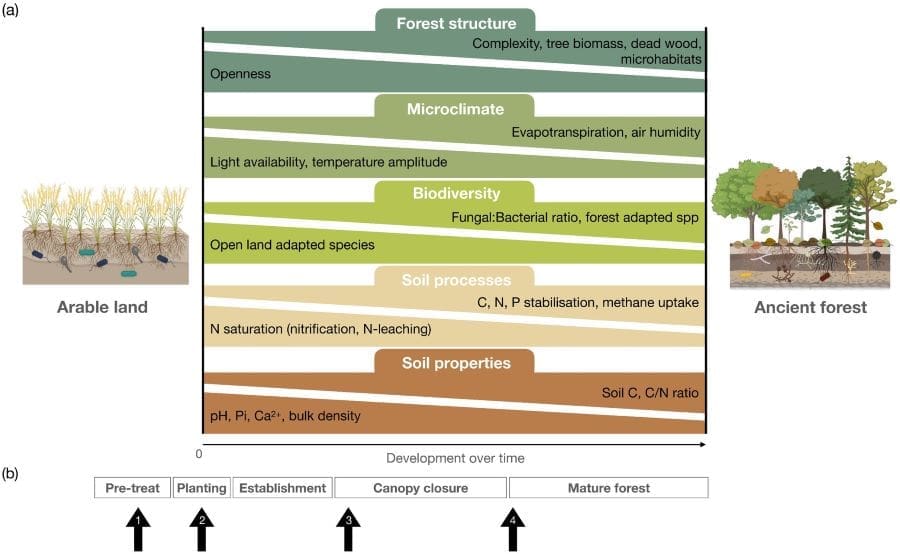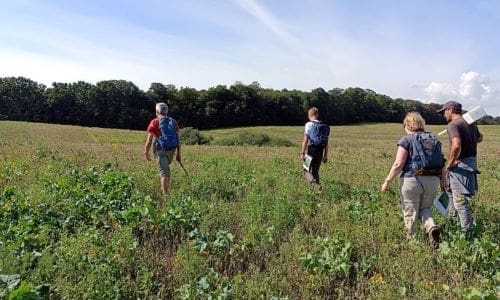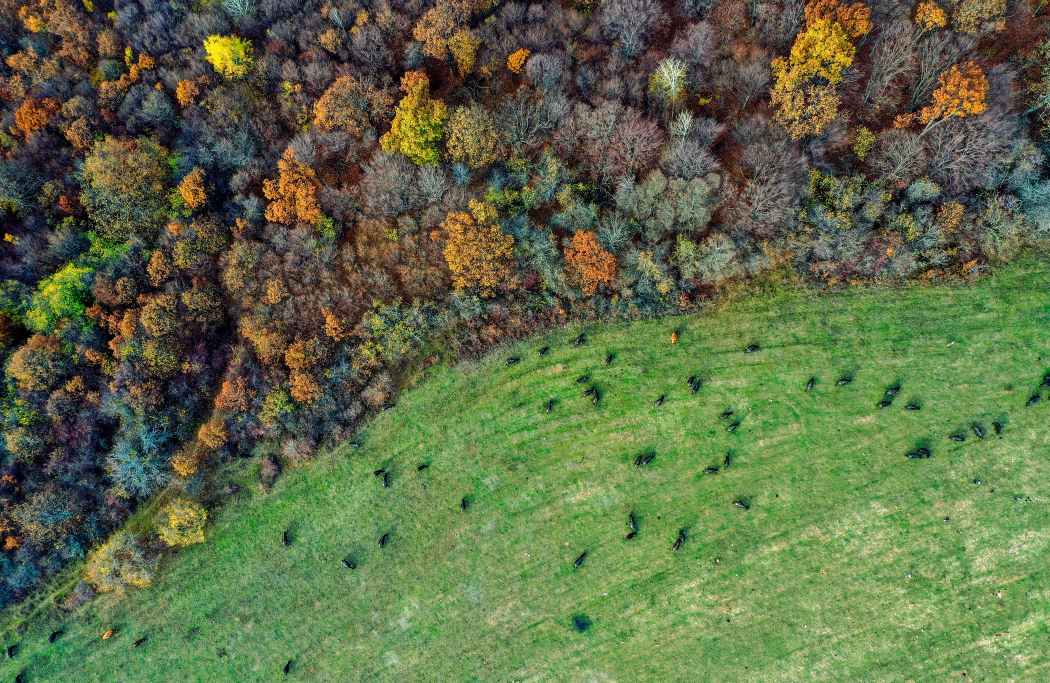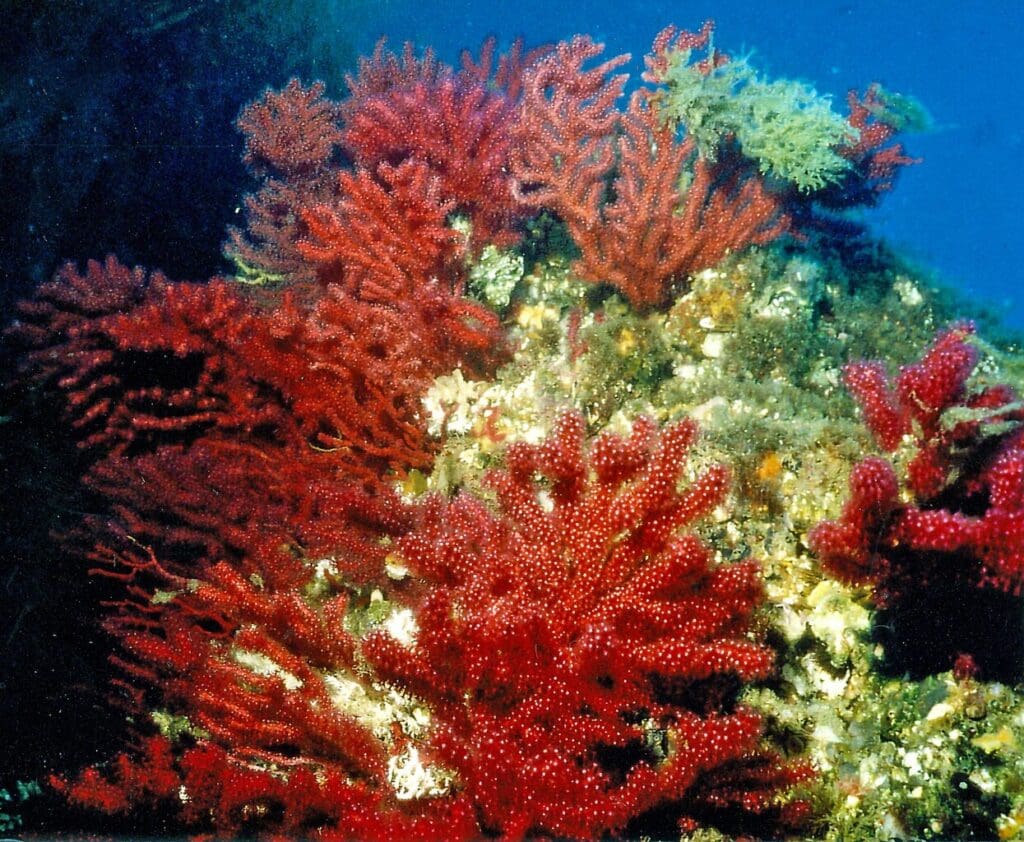Forests returning to former agricultural lands often face slow recovery, hindered by depleted soil biodiversity and lingering agricultural impacts.
A team of researchers from the Silva Nova Project is investigating whether introducing beneficial soil microbes can accelerate this process, fostering more resilient and diverse ecosystems. Their approach will soon be put to the test in a large-scale field experiment in Denmark.
A new approach to afforestation
Establishing forests on land previously used for agriculture presents significant challenges. Decades of farming alter soil composition, strip away microbial diversity, and leave behind nutrient imbalances that can slow tree establishment and ecosystem development. Researchers from the University of Copenhagen, in collaboration with colleagues from Leiden University in the Netherlands and Tartu University in Estonia, believe that soil microbiome inoculation may offer a solution.

Soil inoculation involves introducing a carefully selected mix of bacteria, fungi, plant seeds, and soil fauna to a site in an effort to restore biological functions. In an opinion paper published in Global Change Biology, the researchers discuss that this technique could help overcome agricultural legacies, steering soil conditions toward a state more favorable for forest establishment.
“Introducing beneficial microbial communities can accelerate ecosystem recovery and improve soil biodiversity. However, it is essential to carefully select inoculation types and timings, ensure compatibility between the inoculum and site characteristics, and establish standardized monitoring protocols to assess soil health and biodiversity restoration.”
Per Gundersen, professor at the University of Copenhagen’s Department of Geosciences and Natural Resource Management and co-author of the paper
Restoring soil biodiversity for resilient forests
The success of afforestation efforts has often been measured by tree productivity, but the researchers emphasize that long-term forest resilience depends on rebuilding soil biodiversity as well. A healthy soil microbiome supports nutrient cycling, enhances soil structure, and strengthens trees’ ability to withstand environmental stressors.

While tree planting remains central to afforestation, the researchers argue that soil biodiversity restoration should be an equal priority. Without a thriving microbial community, newly established forests may struggle to develop properly or follow altered successional pathways, leading to unintended ecological consequences. The effectiveness of soil inoculation depends not only on the quality of the introduced microbes but also on how well they match the physical and chemical conditions of the recipient site. If the soil properties of the donor and recipient sites are not compatible, inoculation efforts may fail to establish successfully.
Beyond the scientific considerations, the researchers stress the need for the re-evaluation of afforestation targets and standardized protocols for monitoring the effectiveness of soil inoculation. Tracking changes in microbial communities and soil health over time will be essential in determining whether this method can reliably enhance ecosystem recovery.
Testing the method in Denmark
To explore the potential of soil inoculation in real-world conditions, the Silva Nova Project is launching a large-scale afforestation experiment on a post-agricultural field in Sjælland, Denmark, this spring. The study site will serve as a testing ground for various inoculation strategies, allowing researchers to assess their impact on tree growth, microbial diversity, and overall ecosystem recovery.
By integrating soil microbiome inoculation into afforestation efforts, the researchers hope to develop a more effective framework for establishing forests on degraded land. If successful, this approach could help accelerate ecosystem recovery, making afforestation projects more functionally diverse and ecologically resilient.
The opinion paper, led by assistant professor Sofia I.F. Gomes of Leiden University, is part of the Silva Nova Project, funded by the Novo Nordisk Foundation (2021–2027).
Journal Reference:
Gomes, S.I.F., Gundersen, P., Bezemer, T.M., Barsotti, D., D’Imperio, L., Georgopoulos, K., Justesen, M.J., Rheault, K., Rosas, Y.M., Schmidt, I.K., Tedersoo, L., Vesterdal, L., Yu, M., Anslan, S., Aslani, F., Byriel, D.B., Christiansen, J., Hansen, S.H., Kasal, N., Kosawang, C., Larsen, H., Larsen, K.S., Lees, J., van Dijke, A.C.P. and Kepfer-Rojas, S., ‘Soil Microbiome Inoculation for Resilient and Multifunctional New Forests in Post-Agricultural Landscapes’, Global Change Biology 31: e70031 (2025). DOI: 10.1111/gcb.70031
Article Source:
Press Release/Material by Department of Geosciences and Natural Resource Management | University of Copenhagen
Featured image credit: wirestock | Freepik




